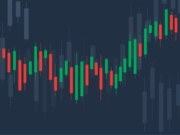A misty morning in the Scottish Highlands, in the oil hub of Aberdeen, I found myself discussing the future of oil prices with a seasoned oil trader, Paul Skinner. His prediction was audacious yet intriguing: “Oil could hit $300 a barrel by the end of 2024.” This bold forecast set the stage for an in-depth exploration of the global oil market’s dynamics.
The year 2024 looms with a potent mix of factors shaping the energy landscape. Geopolitical tensions, soaring material costs, and evolving technologies and regulations intertwine, creating a volatile environment for the oil industry. These elements could act as catalysts, propelling oil prices to unprecedented levels.
Global oil demand, contrary to many predictions, is on an upward trajectory. The demand is expected to increase by 2.3 million barrels per day (mbpd) in 2023, surpassing the historic 100 mbpd mark. This growth, paradoxically, is driven by both traditional petroleum-based transportation and the emerging EV market, highlighting the complex dynamics at play in the energy sector.
Financially, the oil industry is poised for a strong year in 2024. Analysts anticipate that the global upstream oil industry will generate over $800 billion in free cash flows, reflecting its robust economic health. Yet, this financial muscle brings along heightened expectations from various stakeholders, including significant advancements in emissions reduction and increased investments in low-carbon energy sources.
A critical point to consider is the oil and gas companies’ spending on low-carbon technologies. Currently, such expenditures constitute only 4% of their upstream capital expenditures, pointing to a strategic focus on maintaining profitability while balancing innovation.
As we delve into the intricacies of the oil market, this exploration aims to unravel how these diverse and complex factors could converge to make the once-unimaginable price of $300 per barrel a reality by the end of 2024.
The Tipping Points: Factors Fueling the Surge
The journey to $300 oil is not a straightforward path. It’s laden with tipping points that could either escalate or deflate this potential surge. One such tipping point is the global clean energy investment, which crossed the US$1 trillion milestone in 2022. The increasing demand for critical minerals like lithium, cobalt, and nickel, essential for renewable energy technologies, has added a new dimension to the oil market. The demand for lithium alone tripled between 2017 and 2022, spotlighting the intricate relationship between renewable energy growth and traditional energy sources.
In parallel, we’re witnessing a pivotal moment in the refinery sector. Since 2019, the global refinery capacity has shrunk by 4.5 mbpd, with the United States alone seeing a reduction of 1 mbpd post-pandemic. This decline in refining capacity, coupled with the shift to renewable fuels, is reshaping the supply dynamics of the oil industry, potentially leading to tighter markets.
Furthermore, the International Energy Agency (IEA) has raised its oil demand growth forecasts for both 2023 and 2024. For 2024, the IEA anticipates a demand growth of 930,000 barrels per day (bpd). This projected increase, while indicative of ongoing economic recovery, also signals the enduring reliance on oil in the global energy mix.
However, this forecasted demand growth contrasts with a potential slowdown as the last phase of the pandemic economic rebound dissipates, and as energy efficiency gains, expanding electric vehicle fleets, and other structural factors reassert themselves. This juxtaposition of growth and potential slowdown encapsulates the unpredictable nature of the oil market.
A crucial consideration in this narrative is the U.S. Energy Information Administration’s (EIA) forecast. The EIA predicts higher crude oil prices into 2024 due to moderate but persistent inventory drawdowns, caused by a demand outstripping supply. The anticipated average inventory drawdown is 0.4 million b/d between July 2023 and the end of 2024. These inventory dynamics, influenced by OPEC production cuts and increasing global consumption, particularly in China and India, play a significant role in shaping the future oil price trajectory.
As we navigate these complex factors, the notion of oil reaching $300 a barrel becomes less far-fetched and more a consequence of a series of interconnected global events and trends. The stage is set for a dramatic shift in the oil market, one that could lead us to a price point that was once considered impossible.
Navigating the Uncharted Waters: Implications and Conclusion
As we gaze into the crystal ball of the oil market, reaching a $300 price point by the end of 2024 presents both profound implications and daunting uncertainties. Such a price leap would not only reshape the global energy landscape but also have far-reaching impacts on economies, geopolitics, and consumer behavior worldwide.
The implications of such a price increase are manifold. It could accelerate the transition to renewable energy sources, as higher oil prices make alternatives more economically viable. Nations heavily reliant on oil imports would face significant economic pressures, potentially leading to a reshuffling of geopolitical alliances and strategies.
Conversely, major oil-exporting countries would experience a windfall, potentially altering global power dynamics. However, this boon comes with its own set of challenges, as these nations navigate the delicate balance between capitalizing on the short-term gains and investing in long-term sustainable energy transitions.
At the consumer level, a spike in oil prices would likely translate into higher costs for transportation and goods, affecting household budgets and consumer behavior patterns. This scenario could also spur innovations in energy efficiency and a faster adoption of electric vehicles.
As we conclude this exploration, it’s clear that the journey to $300 oil is riddled with uncertainties and is contingent upon a confluence of factors and events. While current trends and forecasts provide a foundation for this prediction, the oil market’s inherent volatility and susceptibility to geopolitical and economic shifts make it a challenging forecast to affirm with certainty.
In summary, the prospect of oil reaching $300 a barrel by the end of 2024 remains a bold prediction. It underscores the dynamic, interconnected nature of global energy markets and the myriad factors that can drive dramatic shifts in commodity prices. As we continue to monitor the evolving landscape, one thing is certain: the oil market will continue to be a central player in the global economic theater, with the potential to surprise and reshape our understanding of energy economics.











